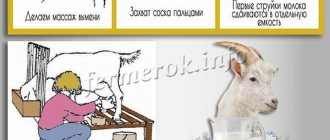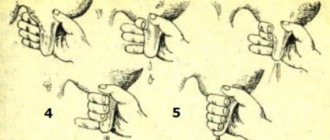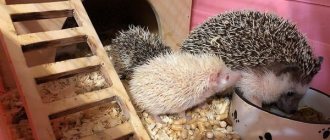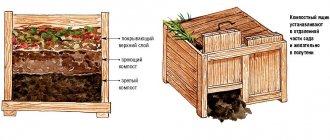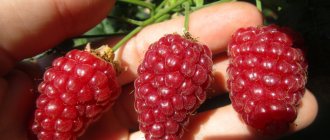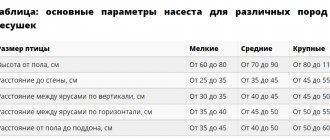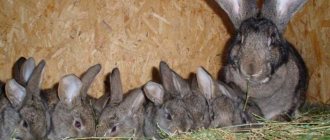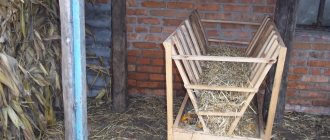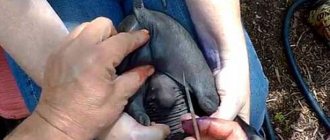Goat milk is a healthy food product that contains calcium, nicotinic acid, fats, proteins, molybdenum, phosphorus, and vitamins. Proponents of a healthy diet and even just farmers are happy to raise goats, since what remains from the animal is not only meat, fur, skin, but also milk. The main thing is to learn how to milk artiodactyls correctly. Inexperienced livestock breeders often face a problem when milk yield leaves much to be desired, wondering why the goat does not give milk. We will consider the problem within the framework of this article, and at the same time we will introduce you to tips on effective milking techniques from experienced farmers.
Factors influencing milk productivity
Like cows, goats have a certain period when they will produce more dairy products than at other times. Cattle milk yield depends on many factors.
Proper nutrition stands apart in the matter of breeding; the animal’s weight gain, lactation, and lambing depend on rational feeding. But what to feed? A goat's favorite treat is branches. The quality of milk depends on the inclusion of such a “food product” in the diet.
Choose non-poisonous branches of bushes and trees; apple, cherry, plum, birch are suitable. In addition to branches, it is advisable to feed the cattle:
- vegetables - not necessarily fresh, the main thing is to thoroughly wash potatoes, carrots, beets and other products before feeding the artiodactyl;
- root vegetables - in particular, turnip roots must be included in the daily diet of livestock, as this product helps increase milk production;
- grass - individuals obtain such food on their own, but the owner must carefully choose pasture for the animal, looking closely at the area, keep in mind that it should not be dry or swampy;
- hay - it must be fresh and of high quality, especially in winter, such feeding will restore the lack of vitamins in livestock;
- grain crops - crushed oats, wheat and barley perfectly satisfy the hunger of goats, but you should not give more than 600 grams of grain per feeding;
- mixed feed - if it is not possible to fatten the animal with the listed types of feed. This food is suitable when there is no time to take the cattle out to pasture, and other types of food are not available.
It is advisable to give goats mineral and vitamin supplements, as well as give them water on time. The more clean liquid an animal drinks, the better, since there is a direct relationship between the amount of drink consumed and milk production.
What else does a goat’s milk yield depend on?
- The Artiodactyl breed, the Saanen type of goat, is distinguished by greater lactation than other breeds; take this into account when breeding livestock.
- Age - an older individual will have less milk yield, regardless of other factors; even with stable feeding, the animal will not be pleased with the high milk productivity.
- Heredity - pay attention to milk yield indicators along the genetic line.
- Number of lambings - after the third or fourth birth, the female is able to produce more milk.
- Health condition - it is better to treat a sick animal or slaughter it; such cattle will not produce dairy products.
Take the animals out into the fresh air more often, and it is better to always keep fresh hay in the feeder so that the goats have something to eat.
Rules for milking a goat
In order for your goat to milk properly, you must follow certain rules. This will allow you to get not only high-quality milk, but also increase its quantity.
Basic rules that every breeder must follow:
- You can get milk for the first time after the first lambing. If you have more desire, you can do it.
- Milking a goat should be done about three times. In winter, you can milk the animal no more than twice a day.
- To get more milk, the goat must be milked precisely on time.
- During milking, you need to handle the goat very carefully. You can't hit or yell at her.
- You need to milk all the milk completely. If this is not done, the animal may develop mastitis.
- You need to introduce a little sunflower cake into your diet. This substance helps improve milk production.
It is worth remembering that what and how much milk the goat will give depends only on you. You don’t just need to get a goat and sometimes feed it, but you need to love it and care for it properly. Only in this case can you get a large amount of milk.
Milking conditions
The animal should be milked in a well-lit room at room temperature. The priority is to carry out milking in special milking parlors, but a regular pen is also suitable. Before you begin, make sure that there is no extraneous noise or drafts in the room. The animal is ready for milking when it reaches one and a half years of age, but not earlier.
Even if the cattle is healthy, you should not milk it right away; first you need to prepare the goat for the procedure. This should be done a couple of months before pregnancy. Preparing an artiodactyl for milk yield consists of:
- in daily udder massage;
- in a balanced diet;
- in washing the udder with warm water and trimming excess hair around.
Before lambing, we stop all these actions, and it is better not to keep the kids near the female, so as not to damage her udder. Babies need to be fed with mother's milk until they reach three months of age, after which the kids will eat the same things as adults.
After the goat has given birth, she must be milked 5-6 times a day, and so on for a week, then over the next six months we gradually reduce the amount of milk yield to two or three times a day. It is important for the farmer to decide on the time, since it is best to milk the animal at the same recommended interval from 9 to 11 am.
Features of preparing hands and udders for milking
Preparation for milking of the person who will perform it is as follows: remove jewelry from the hands that can damage the udder; wash their hands with soap and put on clean work clothes (the ones they will wear to milk the goat all the time).
Preparing the animal before milking comes down to washing the udder. To do this, use warm water.
First, the udder, especially the goat’s teats, are washed with water, using light massage movements, without causing any unpleasant sensations to the goat. You will understand this by the behavior of the goat; it will stand calmly and not kick.
Preparing the udder before milking
It is convenient to dry the udder with a paper towel, but you can also do this with a regular clean towel using blotting movements. If the animal has a tendency to become overgrown with hair on the udder, it should be removed regularly, as it can cause infection in the milk.
Wool from the udder must be trimmed
To improve milk flow, the udder should be massaged before milking. To do this, hands are lubricated with a special nourishing cream for goats. Then she began one, and then the second part of the udder, carefully grasping it and rubbing it. At the end of the massage they should be slightly squeezed.
Before milking, you need to give the goat a small udder massage.
Only after full preparation do they begin to milk the goats.
Varieties of methods for expressing goat milk
There are two known ways to effectively milk goats: manually and using special devices. For inexperienced farmers, both methods will seem complicated due to lack of knowledge of the technique and the nuances of milk yield.
Manual milking
There are several ways to milk a goat by hand, but the most common method is for the farmer to stand at the side of the animal. Before the process, the artiodactyl is fed with branches, hay, and the udder is thoroughly washed. Manual milking is used when the farm is small and the number of livestock is no more than ten. For a manual one, it is advisable to purchase a special machine, then it will be more convenient to obtain milk from an animal.
Machine milking
If you have acquired a large herd and seriously expect to benefit from it, then consider purchasing a milking machine. Not all farmers approve of this method, since they do not trust innovations and technologies, but the machine milking method also has positive aspects:
- the procedure is hygienic compared to the manual method, but udder massage will still have to be done personally;
- cream is obtained using the machine;
- goat milk is expressed completely, thanks to the number of pulsations of the device;
- the risk of convulsions during milk production is reduced.
You need to choose a milking method based on the health of the animals and the number of heads in the herd, and not select a milking method for personal reasons.
Milking technique
Depending on the number of livestock on the farm, the age and condition of the animals, the technology for producing milk is chosen. Milking by hand is suitable for a small herd of 10-15 heads. The machine method is used in industrial farming.
Manual milking
There are three methods of manual milking:
- Plucked. With this method of milking, the goat only grasps the ends of the teats. The method is suitable for first-time kittens, as it ensures gentle and gradual milking of the young udder.
- Fist. Involves working with the entire palm. Suitable for experienced goats with two or more lambings.
- Mixed. Applies in all cases.
It is important to do everything rhythmically, without interruptions. The animal must feel the calmness of the owner. To get rich milk and prevent mastitis, you need to milk the udder completely.
Machine milking
For industrial milk production, a large herd is raised. To milk it, they equip several milking machines in a row and place females on them. From behind, the udder is washed with a special hose and treated with a disinfection solution; put the milking machine on the nipples. As soon as the milk begins to flow into the container, a special sensor records how much milk each female gives and turns off the device when the udder is empty.
The udders are then released, processed, and the animals are released. They bring in the next batch and milk until every goat is milked. Machine milking is more hygienic; the milk goes into a closed tank. During milking, the udder is massaged by a device. After the process is completed, the vacuum suction cups are thoroughly washed with antiseptics.
A clean udder is the key to high milk production
Before milking a goat, the farmer must put on a clean robe, wash his hands with soap, and dry them. There should be no jewelry on your hands, remove everything unnecessary - rings, bracelets, watches. The udder should also be thoroughly rinsed with heated, but not boiled, water, paying special attention to the nipples. After completing the water procedures, dry with a paper or ordinary towel.
Udder massage
The goat needs to be massaged for 2-3 minutes before milking. It is recommended to treat each part of the udder separately, clasping it with both hands and rubbing it on all sides, while gradually lifting the mammary gland upward and squeezing it slightly, then lowering it down, without stopping massaging. Similar procedures are performed up to 5 times a day, this will increase the flow of milk. Massage will have a beneficial effect on the general condition of the cattle, improve metabolism, blood circulation, and the functioning of the mammary glands.
To do this, it is useful to purchase special preparations that help improve the skin of the udder, these include: “Fitosept” ointment, “Zorka”, “Doctor” creams. These products protect the individual’s skin from inflammation, sun rays, frostbite, and prevent the appearance of cracks. The drugs are used both for medicinal purposes and for prevention, but you should not use these products immediately before milking, since some of the cream may get into the liquid.
After milking is completed, also give the goat a massage, wipe the mammary glands with a napkin, and carefully trim the excess vegetation around the udder with scissors so as not to injure or frighten the animal.
Preparing the animal for milking
In order for the goat to be calm about the milking procedure, one cannot do without preparatory manipulations.
Udder preparation
To ensure the shelf life of the milk and protect the udder from the penetration of pathogenic microorganisms, it must be washed with warm water. Washing the udder increases milk yield. Once a week it is washed using baby or laundry soap.
For modern pet owners, devices are available to produce foam that can be used to treat teats. With their help, special preparations, for example, “Bioform”, are foamed. The nipples are immersed in the foam for just a few seconds. This type of udder cleaning is very convenient for treating several animals.
Massage technique with video
To prepare goats for milking, immediately after hygiene procedures you need to massage the udder. This procedure takes no more than 2-3 minutes. Even a novice livestock breeder can master the simplest massage technique. A goat's udder, unlike a cow's, consists of two lobes. To perform a massage, you need to first lift one lobe with both hands. Make several gentle squeezing movements. After this, repeat the procedure with the second share.
See also
How to properly slaughter goats at home, methods of slaughter and cutting of carcassesRead
What drugs improve the condition of the udder?
The udder of a dairy goat needs to be treated with special means. Their action is aimed at protecting tissues from damage, accelerating wound healing, and preventing infections. The most popular:
- “Zorka” cream, the active ingredient floralizin, is used for manual and mechanical milking, has no analogues in the last few decades;
- Fitolit concentrated product, contains aloe vera, used to prepare a solution;
- “EloMix” detergent contains natural soap, is used diluted, can be used as a spray.
Combination with feeding
Typically goats are not fed during milking. This technique distracts the animal and reduces milk yield. However, each animal has its own character. Some individuals are so excitable that they do not allow humans to approach them; it is simply impossible to milk them calmly. In this case, you can combine the feeding process with milking.
Expert opinion
Zarechny Maxim Valerievich
Agronomist with 12 years of experience. Our best country expert.
Ask a Question
Usually, within a few days the goat gets used to the procedure and then calmly milks without eating food.
What are the different techniques for expressing goat milk?
To get more milk, learn an effective technique, because a good farmer must know how to milk a goat with his own hands. If you have previously worked with a cow, this does not mean that milk yield from a goat will not be difficult, because their udders are different in structure, therefore, the techniques are also different. There are three types of manual milking techniques:
- classical – this is when the farmer stands at the side of the animal, which is rightly considered the most correct and hygienic technique;
- Moldavian - suitable for non-dairy breeds in which the glands are poorly developed, the goat breeder is located behind the animal;
- combined method - used to develop the mammary glands of a goat.
Certain milking techniques should be used depending on the shape of the udder and the breed. If we take a closer look at the techniques that allow us to achieve greater milk productivity, then there are also three types of them: milking with a pinch, with a fist, and a mixed method.
Using fists to milk goats
- First of all, rinse the udder with cold water, then take the nipple with your index finger and thumb and gently express the milk.
- We carefully grasp the udder with the ring finger, thumb and little finger, and express the liquid.
- We try to milk every drop of milk without haste, since it is the last portions that contain such a valuable and healthy product as goat fat, rich in important microelements and vitamins.
Interesting
While milking a goat, you will notice how your hand gradually clench into a fist, hence the name of the technique.
Learning to express milk with a pinch
This technique is used when the female has lambed for the first time, that is, the method is suitable for young queens. The essence of this method is to carefully grasp the udder with three fingers: the thumb, ring and little finger, then begin to milk the cattle slowly, with smooth and rhythmic movements. The pinch milking technique is an intermediate stage, after which they move on to combined techniques.
The essence of the combined method
The mixed method of expressing goat milk is a hypostasis of the two previous techniques. We milk the main portion with our fist, gently grasping the udder, and milk the nipples with pinches. The procedure should be performed with soft circular movements, putting light pressure on the mammary glands as your hand approaches the bottom.
If fist milking is used when the udder is large and the mammary glands are developed, and the pinch method is practical for goats that produce little milk, then the combined method is suitable if the cattle has medium-sized teats. Take this dependence into account before milking the goat, and pour out the first 3-4 streams, since they may contain pathogenic microbes.
Useful tips
To milk a goat by hand, you need to make up to 70-75 movements per minute. You can learn this from a more experienced milker. When an animal is kept for milk production, it is advisable to buy a dairy breed. Such goats get used to milking more easily, they can be milked immediately after giving birth, and they are highly productive.
Many animals like to lie down immediately after milking. To avoid this, you can put attractive food in the feeder. For example, some clover or alfalfa hay. This technique will protect the udder from infection.
Getting the first milk
You need to prepare for the goat's milk yield a month before the first lambing. The individual must be prepared for the procedure with a daily short-term udder massage. You can massage the udder with a towel soaked in warm water. It is recommended to have goats of dairy breeds, as they are easier to milk after the first lambing. Other species require a special approach, for example, goats of non-dairy breeds are milked only after 3 months from the moment of the first lambing.
If a farmer seriously intends to engage in livestock farming and plans to make a significant profit from goat milk, then he must adhere to certain rules and learn how to properly milk a goat after lambing, for this:
- do not let the kids near the uterus; newborns are kept in a separate pen, but in such a way that they see the mother;
- young animals should not drink milk on their own, as they can damage the female’s udder with her horns; it is better to feed the babies yourself from a bowl;
- within 5-7 days after birth, milk at least 4-5 times a day, it is during this period that the goat gives more milk;
- It is better to tie the individual to a feeder or attach it to a pen, and before milking it is worth petting the animal and giving it food so that it becomes attached to the owner and is not afraid;
- Do not raise your voice under any circumstances and treat the animal gently, as it quickly becomes stressed, which will negatively affect milk production;
Be sure to monitor the condition of the udder and the health of the animal, since sick goats, even dairy breeds, will not bring the expected profit due to low productivity.
How to milk a goat correctly
We recommend reading our other articles
- Apricot variety Academician
- How to grow strawberries in a greenhouse all year round
- Schefflera - care and reproduction
- Geranium flower
How to milk a goat correctly
Before you learn how to milk a goat, you need to understand how to do it correctly. This subsection discusses where a goat can be milked and what procedures are performed before milking.
In modern goat pens there are special places reserved specifically for milking. There is a table (podium) where the goat is placed, a head mount (experienced breeders do without it) so that the animal is comfortable and the breeder is safe, as well as water, various treats (barley with oats, chokeberries, raisins, bread or something like that) – to distract the female. In a relaxed state, she will eat calmly, and the process will not bring her discomfort. How to properly milk a goat after it is placed on the table?
When the goat is already on the table and ready for milking, its udder must be washed first. A soft cloth is moistened in warm water, wrung out, and the entire udder and nipples are thoroughly washed with it, and then wiped dry with another cloth. Is it that important? There is an opinion that this procedure is not necessary for a goat, but in fact this is not the case. One way or another, she lies on hay and grass while grazing, communicates with other animals, and can touch dirty objects. Particles of dirt remain on the udder, which can then get into the milk, so it’s not worth the risk, especially since the washing procedure lasts no more than 5 minutes.
Important!
After each milking, the cloths used to wash and wipe the goat’s udder must be doused with boiling water, and every other time cleaned with boiling water and soda. If you don’t have time, you can simply wash them with a simple powder.
The next procedure before milking is kneading. Udder massage allows you to express the maximum amount of milk so that it does not remain in the udder and subsequently cause dangerous diseases such as mastitis. The massage is done very simply - take the udder in your hands and simply knead it lightly with your hands, warming up, so to speak. That's it, the preparation is over, below we will discuss how to milk a goat - the main methods and their features.
What to do if milk yield is low
You should not expect high milk yields from goats; of course, in the first month after lambing the animal will delight its owners with milk production, but then gradually the amount of product obtained will decrease. At best, cattle will produce 12-16 liters of milk per day, and this applies to dairy breeds. From 3 to 5 liters per day can be obtained from an average lambing female, if the milk yield is less than half this indicator, then there is reason to wonder why the goat reduced milk.
A decrease in milk production is associated with pathologies and depends on physiological factors.
Reasons for the drop in milk production
- The age of the animal is the main thing a farmer should pay attention to if a goat suddenly stops giving milk. With aging, irreversible processes occur in the body of cattle, which lead to deformation of the mammary glands and hormonal changes. In this situation, it is unlikely that it will be possible to influence the milk yield; it is better not to torture and slaughter the animal.
- Poor nutrition also affects milk production, but it is worth noting that few goat breeders will leave their pet hungry; another thing is that the goat does not receive the necessary microelements and nutrients along with food. Lack of protein, vitamins and mineral salts in the uterus will negatively affect milk yield. Poor food also affects the quality of milk, and low milk yield is often associated with a sudden change in diet. For example, if you feed your animal hay all the time, and then decide to treat your goats with compound feed, then do not be surprised at the drop in milk production, so it is better to change food products gradually, combining the new type of food with what was given before.
- Intoxication – goat poisoning occurs due to eating low-quality products, rotten vegetables, poisonous branches or grass, or ingesting mold along with food. If you suspect that the animal has been poisoned, contact your veterinarian immediately, because only by promptly identifying the cause of the pathology can the animal be cured.
- Housing conditions - poor milk yield is associated with excessive humidity, lack of sunlight in the stall, as well as excessively high or, on the contrary, low temperatures in the room where the cattle are.
- Inactivity - lack of movement will certainly affect the deterioration of milk yield, so take your goats for a walk at least 2-3 times a week.
- Diseases - every fifth case of agalactia in goats is associated with pathologies of the udder and genital organs. A complete lack of milk is one of the signs of mastitis, a disease in which the tissue of the mammary glands becomes infected. Simply put, mastitis is an inflammatory disease of the udder. When a disease is suspected, conduct a full clinical examination to avoid putting the animal at risk.
A decline in milk production is sometimes associated with the preparation of artiodactyls for the next season of mating and bearing offspring. The female's body prepares itself for upcoming difficulties by storing fats and nutrients necessary for recovery after childbirth.
Theory and practice of the milking process
The question of milking may arise before a farmer or the owner of a private household plot as a result of several cases: after the acquisition of adult goats or the birth of babies from their own queens. Goats in households are mainly bred to produce milk; for this reason, it is recommended to have special dairy breeds. The key feature is milking and producing high quality milk over a long period of 9 months (about 305 days).
Dairy breeds are most often found on farms
Dairy breeds
The Swiss Saanen breed is considered the most productive; these are the largest representatives in the world. The weight of females reaches 50 kg, and the height at the withers is 77-78 cm; the weight of males reaches 90 kg. The breed reaches puberty early and is very fertile, producing 3.5 liters of milk per day after the first lambing. 280-300 milking cycles are allowed per year, during which you can get at least 650 liters of milk with a fat content of about 4-4.5%. The latter indicator depends on the season and the animal’s feeding diet. The average daily milk yield sometimes reaches 8 liters.
Young Saanen goat
The Swiss Toggenburg breeds produce high milk yields; they produce 800-1000 liters of milk with a fat content of 4% per season. The milking volume of one female can reach 1200 liters. These animals also have quite long hair - about 20 cm, which can be used to make warm woolen products. It is suitable for breeding for city dwellers who are afraid of horned animals. The breed is considered hornless; in some cases, the goat may have small horns.
Toggenburg goats
In Russia, the Russian White breed of goats is popular, which produces richer milk with a fat content of up to 4.5-5%, and the total volume of milking during the lactation season (8 months) is 400-500 liters. Also popular is the unpretentious Gorky hybrid, obtained by crossing the Saanen breed and local ones. As a result, you can get milk with a fat content of 5% with a milk yield of up to 500 liters per lactation season. This breed is suitable for cheese making.
Dairy breed Russian White on pasture
Dairy goats and their features
What are the hallmarks of a good dairy goat:
- exterior features: small head, compact size, small transparent ears and straight back, large chest;
- udder and veins of the udder: without varicose veins, hematomas, with a thin and delicate vascular network, traced veins, large and well developed. The veins should go up the belly, forming “wells”; the greater the number and size of the wells, the greater the milk yield of the selected individual;
- weight – up to 60 kg.
Calendar year of dairy goats
In Russia you can find a number of other dairy breeds: Cameroon, Alpine, Anglo-Nubian, and also Valdai. Hybrids usually produce higher quality milk. The criteria for milk quality include the absence of odor. It is worth listing the breeds that produce odorless goat milk:
- Saanen;
- Toggenburgskaya;
- Russian white;
- Alpine;
- Cameroonian;
- Megrelian.
The Gorky and Anglo-Nubian breeds give off a faint smell of milk; not all people are sensitive to it. In addition, thoroughly washing the udder helps remove residual flavors.
Dwarf Cameroonian goat
The Cameroon goat is a dwarf breed, ideal for small household plots (houses in the city), the average daily milk yield is 1.5-2 liters. Lactation lasts 4-5 months, lambing - up to 2 times a year, milk fat content - over 5.3%.
Boer goats
The Boer breed is a meat and dairy breed; in addition to milk (up to 2 liters per day), you can get premium quality meat; it is often supplied to expensive restaurants and other establishments. These animals are distinguished by their unpretentiousness and adaptability to hot climates. Gorno-Altai goats are bred as feather goats. Milk is used to feed young animals.
Video - Milking Saanen goats
Secrets of milking goats
Experienced farmers advise starting to milk goats outdoors rather than indoors. Before starting the procedure, greet the animal, pet it, and comb it. Although goats are considered production animals, they, just like pets, love care and attention, so make sure that the individual becomes attached to you.
Some livestock breeders will be wondering if there is a way to milk a goat without lambing. Indeed, it is possible to obtain milk from a nulliparous female; to do this, the following conditions must be met:
- Massage the cattle's udder every day at the same time for 2-3 months, while simulating milking;
- gradually the animal will give milk in small portions, the milk yield will increase each time;
- Be sure to feed the nulliparous goat fresh hay and balanced food, and take her for walks more often.
It is better to milk a goat that has given birth, then there will be more milk, and the pumping process itself will not take much time. It is not difficult to master the correct milking technique:
- We press either nipple with the thumb and forefinger at the very base;
- start slowly and, maintaining a rhythm, apply pressure to the nipple with all fingers.
If the uterus has short nipples, then we use only the thumb and forefinger for milking.
Milk yield after pregnancy failure
Premature birth or false lambing in a goat should not be a cause for concern and will not affect milk production. There are no special rules or techniques for mothers who have given birth prematurely. Use the same milking methods as in normal cases, when the animal gives birth on time and without problems.
Important
If the female has given birth to dead kids, immediately donate the milk; such a product can be eaten only after careful processing and the approval of a veterinarian.
What herbs to feed a goat to increase milk yield
When feeding, the farmer should pay attention to the lactating properties of some herbs. Preparation and collection of plants for food are carried out in the summer. Herbs such as maral root, comfrey, rhubarb, hogweed, alfalfa, fennel, and nettle are recognized as milk-conducing. These plants can be grown in your garden and served dried or fresh. Also, silage should be present in the diet all year round, then there will be no hassle with milk yield.
Some food products will only cause harm if they enter the body, even if they seem harmless. It is strictly not recommended to feed the goat celandine, as this plant contains poisons that are dangerous to the animal’s body and will cause poisoning. Sugar-containing foods and berries contribute to digestive problems, so do not feed your goat such foods. Bird cherry branches will also cause harm to the animal, but it is not necessary to completely exclude them from the goat’s diet, the main thing is to follow the norm: no more than 300 grams of bird cherry branches mixed with branches of other trees per day.
About the frequency of milking per day
Research has proven that a goat can produce different amounts of milk depending on the period of its life. The greatest productivity will be observed during the second and third months of lactation. In summer, the animal produces more milk than in winter, therefore, light and sunlight also affect milk yield. So how many times should you milk a goat per day? You should express milk at least 2 times a day, morning and evening, at the same time.
Features of mechanical milking
Machine milking has undeniable advantages over manual milk production. In addition to greatly speeding up and simplifying the work of milkmaids, the likelihood of contamination of the food product with dirt and microbes is also reduced, and the possibility of improper milking with insufficient experience is also eliminated. The disadvantages are associated with errors in the operation of the equipment - high pressure, low-quality nipple rubber.
Machines for mechanical milking of goats are divided into mobile and stationary. The first ones are inexpensive, but serve only a small number of livestock, usually used on small farms with a livestock of up to 10-20 animals, and also as a reserve. They allow goats to be milked in a stall, which saves on the construction of additional housing. The milking machine consists of:
- compressor;
- can (container);
- milk and air hoses;
- milking cups;
- pulsator.
Stationary milking parlors serve large numbers of goats. Two common systems are parallel and carousel. In the milking parlor of the “parallel” system, the milker is on a lower platform (1-1.5 meters below the main level), and the goats are driven into stalls with their croup facing the operator, located on the side of the aisle. The domestic system accommodates 12 heads or the number of goats that is a multiple of this number, which imposes a certain requirement on the number of livestock. The goats driven into the pen are given food and pushed towards the milker, who cleans the udder and puts on milk glasses.
The milking process in a parallel system increases due to interruptions when moving animals in and out. Carousels are free of this drawback and allow you to serve a large number of goats - their installation is advisable when the milking population is over 500 animals. The goats themselves walk onto a movable platform divided into stalls, and the milker simply stands still and places glasses on the teats. The operator's work is simplified as much as possible. The choice of milking system should be based on your livestock population. A small number of goats can be handled manually, but if you are planning to expand your dairy production, then be sure to choose machine milking.
How to calm your goat's anxiety during milking
Before milking, make sure that the animal has time to become attached to you. The animal must be pacified by stroking and in a good-natured, soft voice. Tie the female to the milking machine, in the first 5-6 days she will be uncomfortable, but after that the cattle will get used to it, and milking her will not be a problem.
If goats are anxious during milking, pay attention to your hands: nails should be cut, there should be no abrasions or scratches on the fingers that could injure the nipples. Be sure to feed the goat before and after milking, and after finishing, lubricate the udder with Vaseline.
How to milk a goat after lambing
Also check out these articles
- Rabbit cages
- How to grow an apricot from a seed
- Livensky Calico breed of chickens
- Indian Runner Duck
After lambing, females need regular milking. In nature, all the milk is drunk by the goat, but on farms, to facilitate the procedure, and also to collect all the milk as much as possible, goats are specially milked, even if the kids are not taken away from them.
The first milking is carried out 1.5 hours after the baby is born. During milking, it is advisable to restrain the animal, although if the goat is calm and knows the owner well, then this is not necessary. The milk obtained after milking is usually kept for up to 3 days and then given to the offspring from a bottle, although many breeders give fresh milk.
Milking using machines
Milking machines make it possible to obtain milk from production animals in a short time. Manufacturers offer equipment for both small livestock and flocks of 10 or more goats. Mini milking machines are capable of expressing milk from 7-9 goats one at a time within an hour. The devices are simple to use; the principle of operation is to cause compression of the nipple through mechanical action on it, thus collecting milk. Using a milking machine will reduce the likelihood of injury to the udder by 3 times and make the farmer’s work easier.
Rules of application
Before using the device, carefully read the instructions, since milking machines differ in both characteristics and operating rules. Basic rules on how to properly milk a goat with a device:
- the device must be disinfected, check whether there is a vacuum in the nipple cups;
- we tie the goat to a stand or machine;
- wash your hands, give the cattle some feed;
- The goat's teats should be washed with warm water, it is also advisable to use antimicrobial agents to rub the udder;
- we massage the udder of the cattle, and collect the first streams of colostrum in a separate bowl;
- wipe the nipples with a napkin or paper towel, but do not use wet wipes for these purposes, so as not to provoke inflammatory processes;
- carefully place the cups on the goat’s nipples, then apply a vacuum and monitor the flow of liquid;
- We immediately disconnect the device from the nipples if the milk has stopped being expressed, then we milk the animal manually to prevent pathologies.
After use, the device must be disinfected again with antibacterial agents and rinsed thoroughly. We give the animal some food and clean water, and send it to the herd.
</<iframe src=»https://www.youtube.com/embed/l2Knk8K4jRM» width=»560″ height=»315″ frameborder=»0″ allowfullscreen=»allowfullscreen»>
Manual milking
On a farm with no more than 10 goats, milking is usually done by hand. The most rational sequence of the process has been developed over many years of practice, which has made it less tedious. For milking, the goat should be placed in a pen and feed should be placed in the feeder, to which she will be distracted. If goats kick during milking, they can be weaned from this by putting the goat's favorite treat in the feeder each time they are milked.
The owner sits next to his pet and, grasping the nipple at the base with his thumb and forefinger, squeezes, pushing the milk down from the nipple several times until the milk begins to flow. The first streams are put into a separate container, as they should not be eaten. After all the milk has been milked, you need to lightly massage the goat's udder and try to milk the last drops.
Method of milking goats
After milking, the udder is massaged for 10 seconds and wiped dry with a towel using blotting movements. If caring for your pet is correct, then the goat gives milk regularly and without difficulty.
Prevention and treatment of mastitis in goats
The most recognized disease in goats is mastitis. Inflammation of the mammary glands occurs due to pathogenic bacteria, the influence of harmful chemicals or mechanical injuries to the udder. The symptoms of the disease are as follows:
- increased temperature at the site of the lesion - if you take the udder in your hands, it will be unnaturally hot;
- there is an increase in the animal’s lymph nodes;
- the cattle will experience pain when the owner takes the udder in his hands, because of this the goat may scream;
- the mammary glands fester;
- complete decline in milk production;
- Blood can be seen in milk.
If you notice any of these signs, contact your veterinarian to take steps to eliminate the disease.
How to diagnose
Diagnosis of the disease should be carried out within a month from the moment of lambing, and then the procedure should be repeated every three weeks until the lactation period has passed. Experienced farmers, in order to recognize mastitis, pass the first streams of milk through a sieve; if at the same time the formation of mucous masses and ichor is observed, then these are sure symptoms of pathology.
Every year, diagnose goat milk to identify microbes; an experienced veterinarian will help you do the analysis.
About precautions
- The animal should not lie on damp, cold ground; the recommended temperature in the stall is 12-15 degrees.
- Change the bedding under your cattle every day to prevent bacteria from getting on the udder.
- Achieve full milk yield as the remaining milk decomposes and leads to inflammation.
- Drink only warm water.
- Disinfect your goat's teats after pumping milk again.
- Do not take your pet for a walk in rainy or cold weather.
- Try to give roughage and root vegetables daily.
- When milking a goat at home, do not forget to give the cattle a preliminary massage.
Mastitis in goats comes in several forms; the purulent type of the disease is considered dangerous, when festering growths form on the udder. Be sure to treat the animal on time; if the pathology is neglected, the therapy will take a lot of time and money.
To consistently get high milk yields, take care of the animal, study milking techniques, and monitor the health of the cattle.
Using the machine
A milking machine is usually used if there is a large farm and because of this it is impossible to carry out manual milking on your own. In order for the process to be comfortable and safe for the animal, you should know exactly some of its features.
You can also use milking machines to milk goats.
Nipple cups must certainly create a high-quality vacuum. Before each use, they must be disinfected with antiseptics specified in the instructions for these devices. Next, having prepared the udder according to all the rules, you must first milk the goat a little with your hands to release the first milk, and only then put the cups of the device on the nipples. After applying the vacuum, milking begins. When the milk has dried up, the device is turned off, the remaining milk is milked out by hand and the nipples are treated with cream. The goat should be milked using the machine 2 times a day.
When she lambed
Dairy goats should be milked immediately after lambing. Ordinary - after 3 months after birth. This is due to the characteristics of lactation. A dairy goat can provide milk for both kids and the farmer. Usually babies are separated from their mother and fed independently from a bowl of mother's milk. Profit from milk sales decreases slightly.
The first week milking occurs 5 times a day. Mother's milk is fed to goats to improve their immunity. After a month, it is diluted with water and complementary foods are introduced for the young animals. At 3 months, goat kids do not drink milk and are switched to an adult diet.
To increase milk yield, vitamin and mineral supplements are used and the diet is adjusted. Grain is reduced to a minimum, and the daily intake of feed and concentrates is increased. Proper milking technique plays an important role in good milking performance.
Milking age
Milking early will not lead to anything good. According to the natural biological rhythm of animals, milk first appears at the birth of babies. Its original function is to feed the offspring. It is at this moment that the goat’s body is set up for long-term lactation. If the natural rhythm of the goat’s body is disturbed by early milking, a hormonal imbalance may occur, exacerbating the animal’s chronic diseases. Such milk will not be nutritious enough.
Important! You cannot milk a goat before the first mating to preserve natural processes.
Preparing the udder for milking begins a month and a half before the kids are born. This is a very important stage for the firstborn. She may be frightened by the abrupt start of this procedure and not allow the person to approach her. The process should bring pleasure to the animal without causing stress. Otherwise, the quantity and quality of milk will suffer. And it will be useful for a novice goat breeder to learn to act confidently.
Milking a goat
The shape of a goat's udder and teats is different from that of a cow. Even if the milkmaid has experience working with cows, she should learn how to use her hands correctly to milk a goat. Only fists are involved (fingers practically do not slide over the nipples).
Milking technique:
- Using your thumb and index finger, pinch the udder at the base, forming a ring.
- The remaining fingers apply gentle pressure.
The technique for collecting milk is reminiscent of squeezing pastry cream out of bags.
The procedure is repeated 4-5 times a day, completely emptying the udder. Thus, the goat’s productivity increases by up to 20% (due to active stimulation of lactation).
Milking stages:
- Preparation. Includes hygienic treatment of the animal’s udder and the milkmaid’s hands. Hands must be thoroughly washed in soapy water and treated with an antiseptic (some farmers wear sterile medical gloves). The goat's udder is washed in a soapy solution (using hypoallergenic products), blotted with a paper towel, treated with an antiseptic and allowed to dry naturally. Antibacterial wipes and paper towels are sometimes used.
- Udder massage (for better product circulation and expansion of milk ducts). For 10 minutes, the goat is given a warming massage using stroking and rubbing. Then raise and lower the udder for 1-3 minutes (warm-up exercise).
- If the goat is not yet accustomed to the procedure, it should be milked while eating, fixed in one place. This way she won’t resist while standing in one position.
- Milking procedure in accordance with the required technique.
- Treatment with an ointment that soothes the delicate skin of the nipples.
